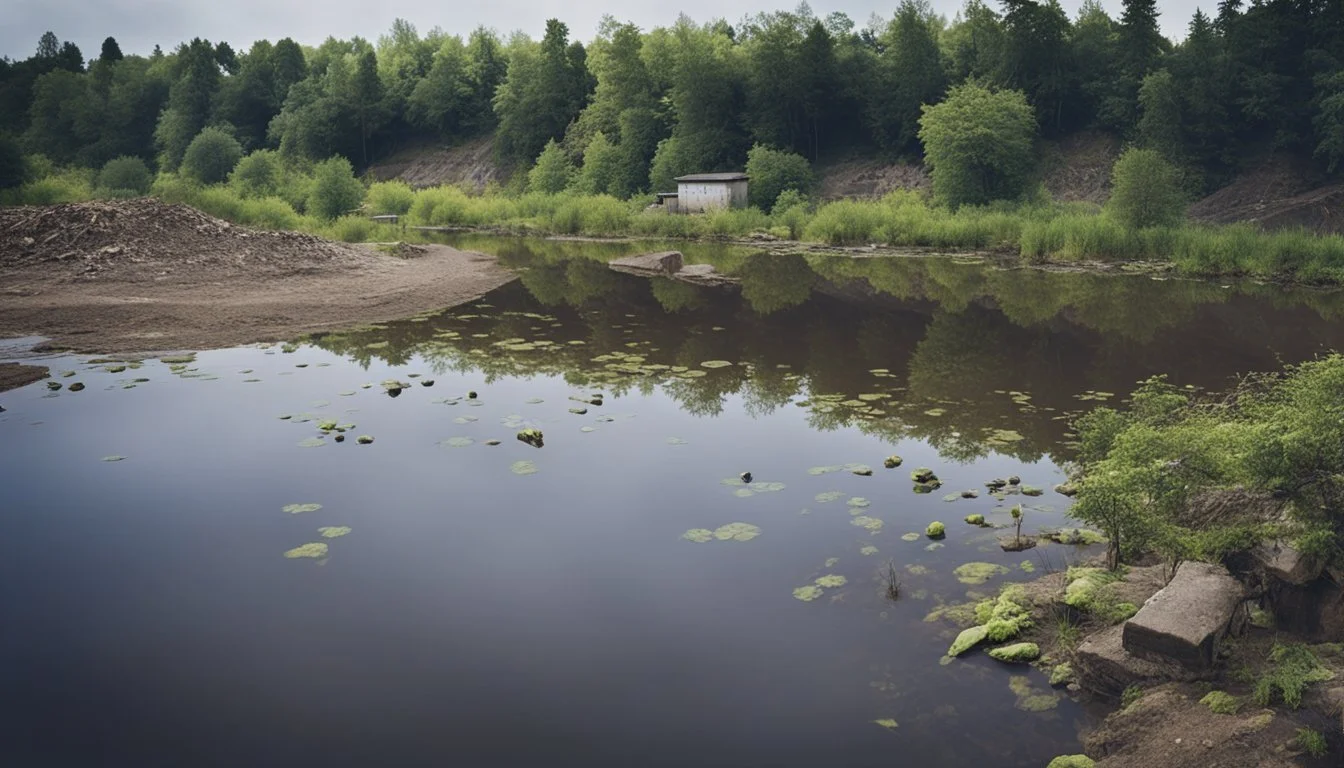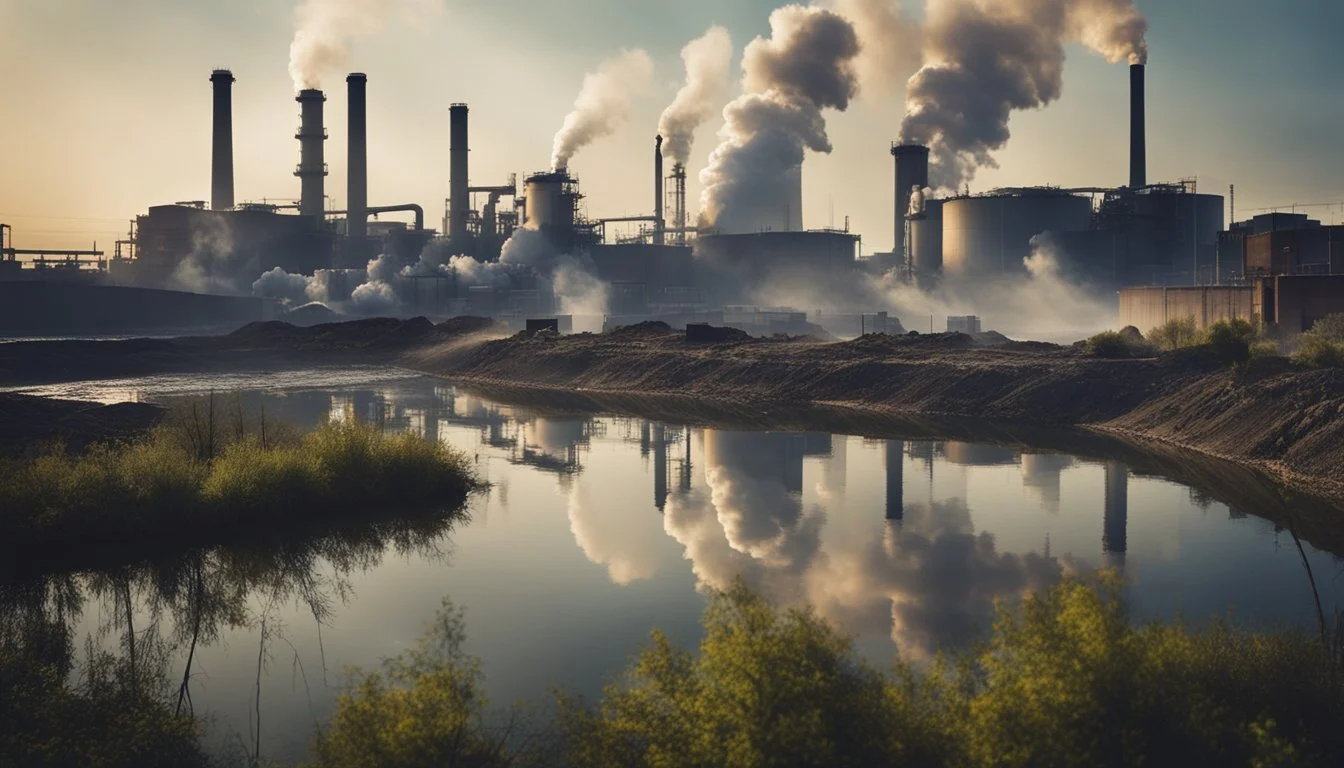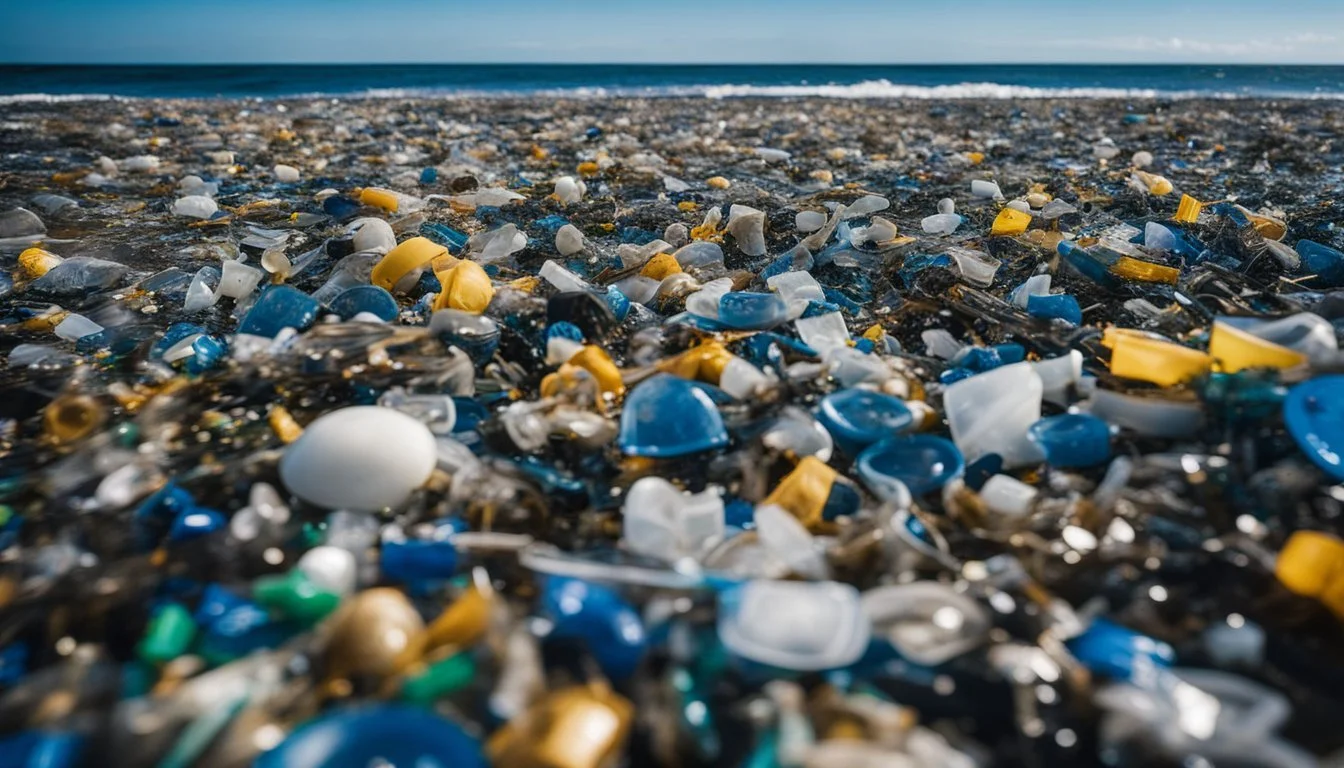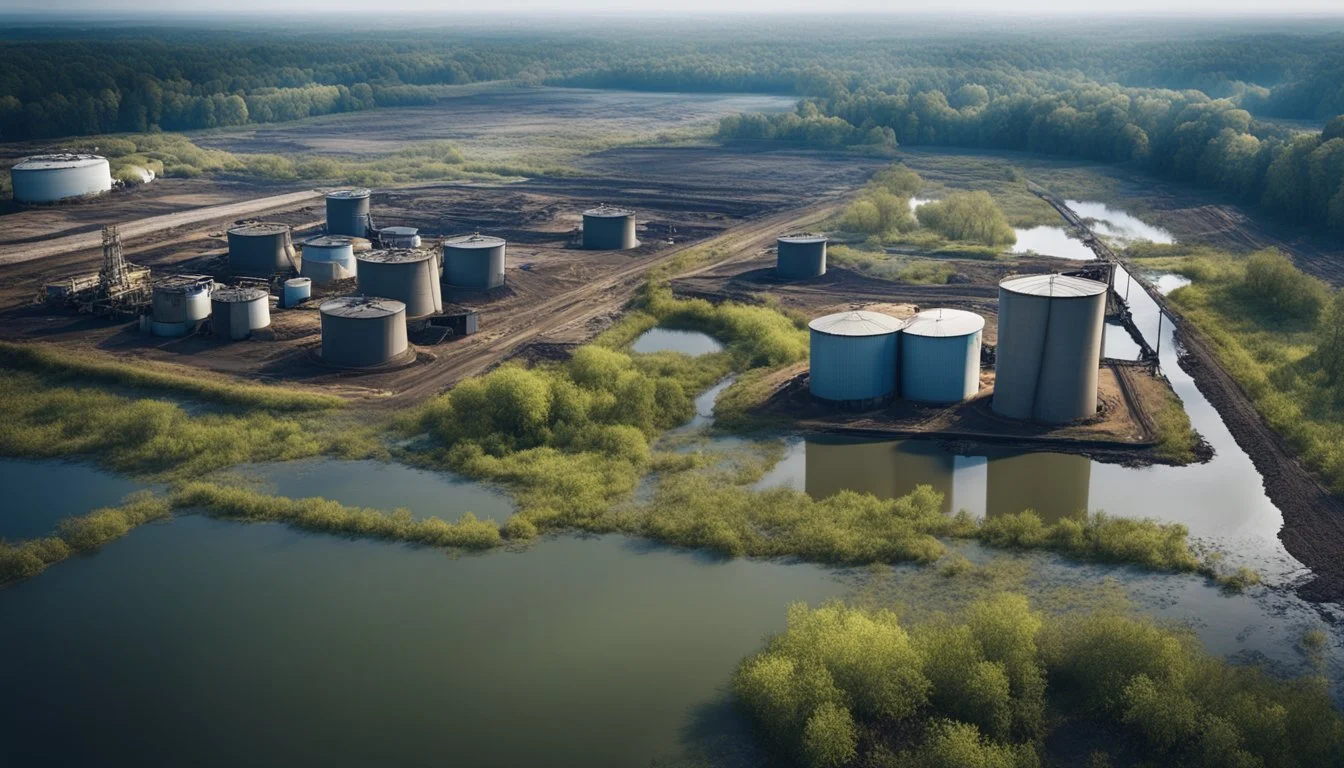7 True Crime Documentaries About Environmental Crimes in Industrial Areas
Must-Watch Exposés
Environmental crimes in industrial areas have long been a pressing concern, shedding light on the darker side of human activity that has severe repercussions for both nature and society. Documentaries in the true crime genre have taken on the task of exposing these environmental misdeeds, blending investigative journalism with compelling storytelling.
Viewers are encouraged to confront the harsh realities of industrial pollution and its impact on ecosystems and communities. These documentaries serve as powerful tools for raising awareness and fostering a deeper understanding of the urgent need for environmental protection and accountability.
1) Dark Waters (2019)
"Dark Waters," a 2019 film directed by Todd Haynes, explores the real-life legal battle led by attorney Rob Bilott against the chemical giant DuPont. Mark Ruffalo stars as Bilott, a corporate lawyer who transitions into an environmental advocate when he uncovers that DuPont contaminated a town in West Virginia with hazardous chemicals.
The film highlights Bilott's prolonged struggle to expose the extent of the pollution and hold DuPont accountable. It is based on a true story and shows the significant impact of industrial pollution on both the environment and public health.
"Dark Waters" brings attention to the use of unregulated chemicals and the resistance faced when challenging powerful corporations. This legal thriller provides a chilling depiction of corporate negligence and the fight for environmental justice.
For more details, visit the IMDb page.
2) The Devil We Know (2018)
"The Devil We Know" explores the impacts of perfluorooctanoic acid (PFOA), a chemical used in the production of Teflon. Directed by Stephanie Soechtig, the film documents the struggles of West Virginia citizens against the chemical company DuPont.
The documentary reveals how PFOA, also known as C8, became a pervasive environmental contaminant. The film highlights the alarming fact that this chemical is present in the bloodstream of 99.7% of Americans.
Central to the film are the stories of individuals directly affected by the contamination. The narrative follows their efforts to hold DuPont accountable for environmental and health damages.
The documentary underscores the broader implications of corporate malfeasance and regulatory failures. It raises questions about the safety of everyday consumer products.
The Devil We Know offers a detailed look at one of the significant environmental scandals in recent history. It presents a compelling case for corporate responsibility and stricter environmental regulations.
More information on "The Devil We Know" can be found on Wikipedia or IMDB.
3) The True Cost (2015)
"The True Cost" is a documentary that explores the severe environmental and human impact of the global fashion industry. Directed by Andrew Morgan, the film takes a hard look at how fast fashion contributes to pollution and poor working conditions in industrial areas.
The documentary features interviews with workers, activists, and experts. They shed light on the hidden costs behind the cheap prices of clothing. These insights reveal the exploitation and environmental degradation prevalent in the fashion supply chain.
Morgan's work connects consumer choices to the suffering of garment workers and the ecological harm in production regions. It calls for increased corporate accountability and sustainable practices in fashion.
4) DamNation (2014)
"DamNation" is a documentary that explores the complex, often detrimental impacts of dam construction on the environment in North America. Directed by Ben Knight and Travis Rummel, the film highlights the transformation of public opinion about dams over the decades.
The filmmakers examine the historical context of dam building, once widely seen as a symbol of progress and development. They contrast this with modern views that recognize the ecological damage caused by dams, such as disrupted fish migrations and altered river ecosystems.
"DamNation" documents several key dam removal projects, including those on the Elwha, White Salmon, Rogue, and Penobscot Rivers. Through these stories, the film illustrates the positive environmental changes that can result from removing obsolete dams.
For more information on the film, visit IMDB.
5) A Fierce Green Fire (2012)
"A Fierce Green Fire" is a documentary directed by Mark Kitchell. It explores the history of the environmental movement, focusing on grassroots and global activism. This film spans fifty years, highlighting significant events and figures that shaped environmental conservation and justice.
The documentary is structured in five acts. Each act focuses on a pivotal moment or influential figure in the environmental movement. Biologist E.O. Wilson served as an advisor, suggesting the key events and people to feature.
Notable participants include Meryl Streep, Robert Redford, Ashley Judd, and Isabel Allende, who provide narration and insights. These prominent voices help in portraying the various eras of the movement.
This film is renowned for its comprehensive exploration of environmental activism. It doesn't shy away from linking environmental justice to human rights issues, making it a critical piece for those studying environmental crimes and activism.
More details on "A Fierce Green Fire" can be found on IMDb.
6) Gasland (2010)
"Gasland," directed by Josh Fox, is a critical documentary that focuses on the environmental impacts of hydraulic fracturing, commonly known as fracking.
The film explores various communities across the United States affected by natural gas drilling. It provides a firsthand look at the consequences faced by residents living near fracking sites.
Fox highlights how the process of fracking contaminates water supplies and releases toxic chemicals.
He interviews numerous locals who experience daily environmental issues due to gas drilling, such as flammable tap water and health problems.
The documentary played a significant role in raising awareness about fracking and mobilizing the anti-fracking movement.
Fox's investigative and personal approach offers viewers a stark visual account of the industry's impact on the environment and public health.
For more information about this documentary, please visit Gasland on IMDb.
7) Plastic Paradise: The Great Pacific Garbage Patch (2013)
"Plastic Paradise: The Great Pacific Garbage Patch" examines the environmental crisis caused by plastic pollution. Directed by Angela Sun, the film documents her journey to Midway Atoll to uncover the massive accumulation of plastics in the Great Pacific Garbage Patch.
Throughout the documentary, Angela Sun meets with scientists, industry representatives, legislators, and activists. They explain how our consumption habits have led to this enormous environmental issue. The film provides an insightful look into the consequences of plastic use and its impact on the marine ecosystem.
Midway Atoll, although far from populated areas, has become the epicenter for this plastic pollution. The durability and widespread use of plastics make it a persistent problem, affecting wildlife and ecosystems on a global scale.
For more about the film, visit IMDb.
Understanding Environmental Crimes
Environmental crimes in industrial areas present severe threats to ecosystems and human health. These crimes often involve illegal activities resulting in significant harm to the environment and require a robust legal framework to address them.
Definition and Scope
Environmental crimes refer to illicit acts that directly harm the environment. They typically include illegal dumping, pollution, and unauthorized trading of hazardous materials. These offenses affect natural resources and public health. Industrial activities are often the primary sources due to their large-scale operations and potential for waste production.
Governments and international bodies identify and categorize these crimes, seeking to mitigate and prevent further damage. Green criminology explores the socio-political aspects of these acts, emphasizing the need for ecological justice.
Common Types of Environmental Crimes
Several common types of environmental crimes in industrial areas include:
Illegal Waste Disposal: Involves the unlawful dumping of hazardous waste.
Air and Water Pollution: Unauthorized emissions or discharges from industrial plants.
Illegal Logging and Deforestation: Unregulated removal of trees impacting biodiversity.
Wildlife Trafficking: Unlawful trade of endangered species for products.
Illegal Mining: Extraction of minerals without proper authorization.
Each type can cause lasting damage to ecosystems and human communities, necessitating stringent monitoring and enforcement.
Legal Consequences
Environmental crimes carry significant legal repercussions. Penalties may include hefty fines, imprisonment for responsible parties, and mandatory cleanup operations. Laws like the Clean Air Act and the Clean Water Act in the United States provide frameworks for prosecution.
International conventions, such as the Basel Convention, regulate the transboundary movement of hazardous wastes. Enforcement involves multiple agencies, including environmental protection agencies and international bodies, to ensure compliance and accountability.
The legal landscape continually evolves to address emerging threats and more effectively prevent environmental crimes.
Impact on Industrial Areas
Environmental crimes in industrial areas have profound implications, particularly affecting the health of local residents and the economic and social fabric of these communities.
Health Risks for Residents
Environmental crimes can lead to severe health risks for individuals living near industrial areas. Exposure to toxic chemicals from illegal dumping and pollution can result in respiratory illnesses, cancers, and other serious health conditions.
Children and the elderly are especially vulnerable, facing a higher risk of developing asthma and other chronic diseases. Contamination of local water sources and soil can lead to long-term health issues, making it crucial for ongoing monitoring and intervention to protect public health.
Economic and Social Effects
These crimes also have significant economic and social effects on industrial communities. Property values in polluted areas tend to decline, reducing wealth and investment in the community. Jobs may be lost if industries are fined or shut down due to environmental violations.
Social cohesion suffers as well, as communities often experience increased stress and division over response efforts and accountability. Addressing these issues requires comprehensive policies and community engagement to rebuild trust and stimulate sustainable development.
Case Studies and Historical Context
Industrial areas have been hotspots for various environmental crimes. Historical examples demonstrate the severe impacts of industrial pollution and negligence, offering crucial lessons.
Notable Industrial Environmental Crimes
Love Canal, New York: A 70-acre landfill in Niagara Falls that led to numerous health issues in the 1970s due to toxic waste dumping by the Hooker Chemical Company. Residents faced increased rates of cancer and birth defects.
Minamata Disease, Japan: Discovered in 1956, this mercury poisoning atrocity was caused by industrial wastewater from Chisso Corporation. Thousands suffered from neurological damage and fatalities.
Bhopal Disaster, India: The 1984 gas leak in a pesticide plant managed by Union Carbide resulted in over 3,000 immediate deaths and long-term health consequences for thousands. The incident highlighted the dire need for industrial safety and regulation.
Chernobyl, Ukraine: In 1986, a catastrophic nuclear accident released vast amounts of radioactive particles. Though often associated with broader environmental and human impacts, it's critical to understanding state-level corporate negligence.
Erin Brockovich Case, USA: The Pacific Gas and Electric Company contaminated the water supply in Hinkley, California, with hexavalent chromium. The legal battle culminated in 1996 with a landmark settlement, but health effects persist.
Lessons Learned from Past Incidents
Stringent regulations and continuous monitoring are essential in preventing industrial pollution.
The incidents underscore the need for corporate accountability and transparent reporting. Companies must adopt sustainable practices to mitigate harmful emissions and dispose of waste responsibly.
Community awareness and advocacy play pivotal roles in addressing environmental injustices. Public pressure and legal action can lead to significant policy changes and reforms.
Global cooperation is necessary to enforce environmental standards and address transnational environmental crimes. International treaties and agreements strengthen the collective response to industrial pollution.
Educational initiatives are vital for promoting environmental stewardship among future generations. Empowering communities with knowledge and resources leads to more effective local and global conservation efforts.
Fostering partnerships between governments, NGOs, and the private sector enhances the capability to tackle environmental crimes. Collaborative efforts ensure a multi-faceted approach to identifying and resolving issues.











